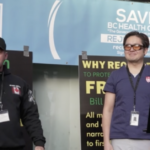
Post-vaccine syndrome is a complex disease. Treatment must be individualized according to each patient’s presenting symptoms and disease syndromes. Not all patients respond equally to the same intervention. Early treatment is essential; the response to treatment will likely be weaker when treatment is delayed.
This document is designed for healthcare providers caring for patients with symptoms following a COVID injection. While a handful of the therapies can be self-administered, we strongly recommend that patients consult with a healthcare provider before beginning any new treatment. (To find a provider, consult FLCCC’s provider directory.)
There are also some important cautions and contraindications that should be carefully reviewed within the more comprehensive and detailed document called “An Approach to Managing Post-Vaccine Syndrome” and which should be discussed with a qualified provider as well.
This information is not intended to serve as a substitute for diagnosis, treatment, or advice from a qualified, licensed medical professional. The facts presented are offered as information — not medical advice. Any treatment protocol should be discussed with a trusted, licensed medical professional. Never stop or change medications without consulting your healthcare provider.
It is important to emphasize that, since there are no published reports detailing how to treat vaccine-injured patients, our treatment approach is based on the postulated pathogenetic mechanisms, principles of pharmacology, clinical observations, and feedback from vaccine-injured patients themselves. We are constantly updating the approach as new data emerges and based on consultation with trusted healthcare providers.
Patients with post-vaccine syndrome must not receive further COVID-19 vaccines of any type. Likewise, patients with long COVID should avoid all COVID vaccinations.
Patients with post-vaccine syndrome should do whatever they can to prevent themselves from getting COVID-19. This may include a preventative protocol (see I-PREVENT) or early treatment in the event you do contract the virus or suspect infection (see I-CARE). COVID-19 will likely exacerbate the symptoms of vaccine injury.
Once a patient has shown improvement, the various interventions should be reduced or stopped one at a time. A less intensive maintenance approach is then suggested.
The core problem in post-vaccine syndrome is long-lasting “immune dysregulation.” The most important treatment goal is to help the body restore a healthy immune system — in other words, to let the body heal itself. Our recommended treatment strategy involves two major approaches:
- Promote autophagy to help rid the cells of the spike protein
- Use interventions that limit the toxicity/pathogenicity of the spike protein
We recommend the use of immune-modulating agents and interventions to dampen and normalize the immune system rather than the use of immunosuppressant drugs, which may make the condition worse.
Although we have listed suggested therapies below, we strongly suggest that, before initiating any of the below therapeutics, all patients and providers closely review the more detailed and comprehensive document — “An Approach to Managing Post-Vaccine Syndrome” — for information regarding dosing, cautions, contraindications, and other important details. Page numbers are noted below for ease of reference.
First Line Therapies
(Not symptom specific; listed in order of importance)
- Intermittent daily fasting or periodic daily fasts (pg. 16)
- Ivermectin (pg. 19)
- Moderating physical activity (pg. 19)
- Low-dose naltrexone (pg. 20)
- Resveratrol (pg. 20)
- Melatonin (pg. 20)
- Aspirin (pg. 20)
- Methylene blue (pg. 20)
- Sunlight and Photobiomodulation (pg. 22)
- Probiotics/prebiotics (pg. 23)
- Spermidine (pg. 23)
Adjunctive/Second-Line Therapies
(Listed in order of importance)
- Magnesium (pg. 24)
- N-acetyl cysteine (pg. 24)
- Cardio Miracle™ and L-arginine/L-citrulline supplements (pg. 24)
- Omega-3 fatty acids (pg. 25)
- Sildenafil (pg. 25)
- Nigella sativa (pg. 25)
- Vitamin C (pg. 25)
- Vitamin D (with Vitamin K2) (pg. 25)
- Fluvoxamine (pg. 25)
- Non-invasive brain stimulation (pg. 26)
- Intravenous Vitamin C (pg. 26)
- Behavioral modification, relaxation therapy, mindfulness therapy, and psychological support (pg. 26)
Third Line Therapies
- Hyperbaric oxygen therapy (pg. 27)
- Low Magnitude Mechanical Stimulation (pg. 27)
- “Mitochondrial energy optimizer” (pg. 27)
- Hydroxychloroquine (pg. 27)
- Low-dose corticosteroid (pg. 27)



